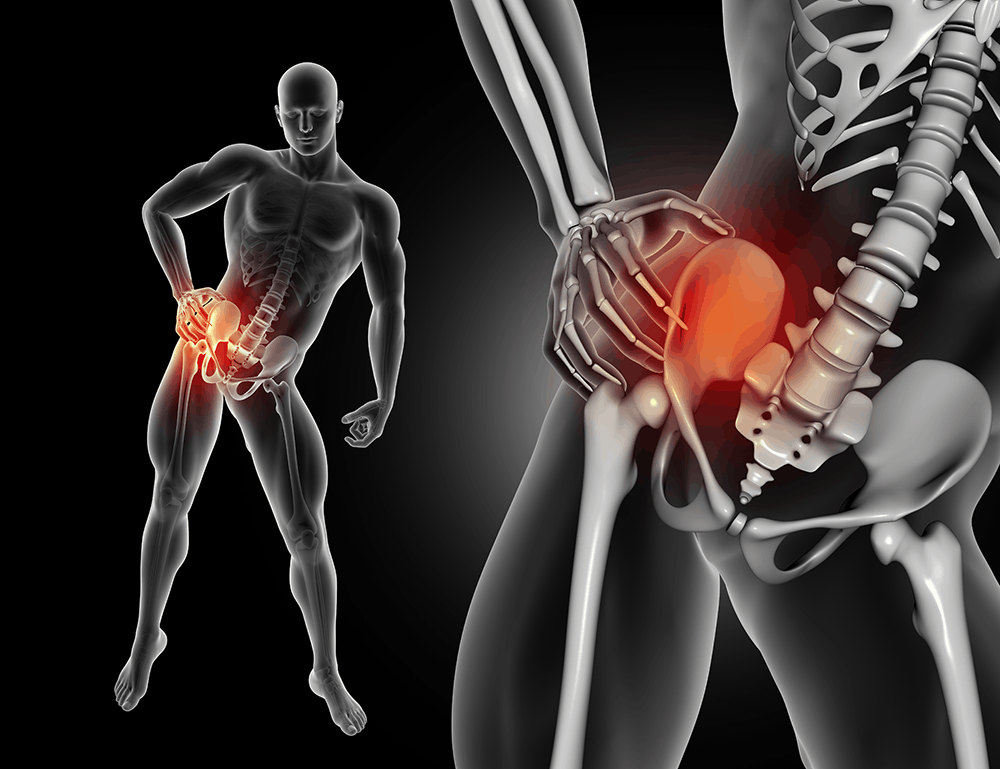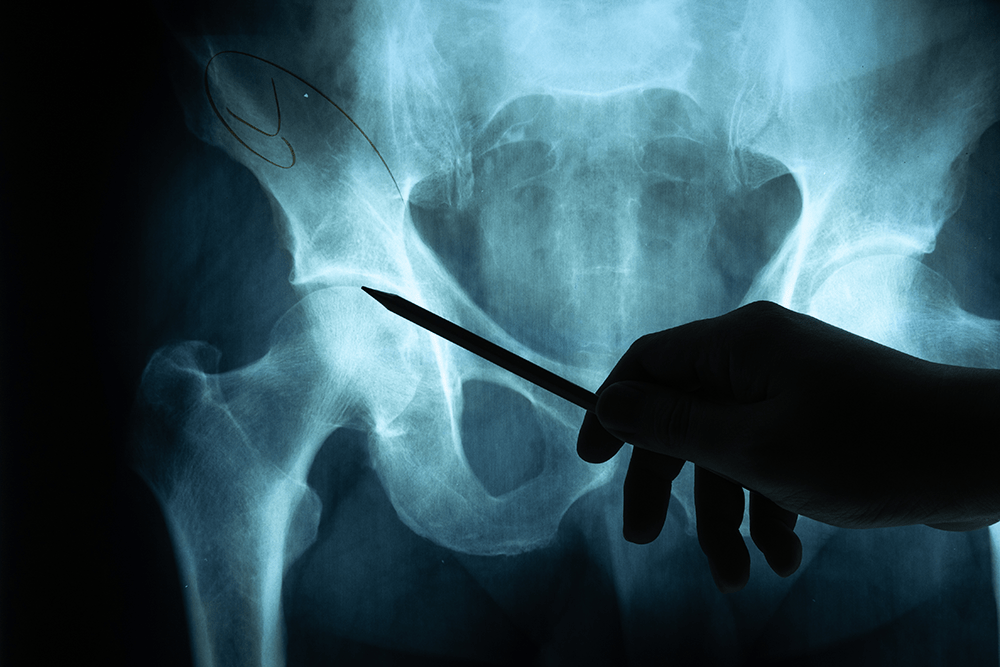Sacroiliac joint fusion (or SI joint fusion as it’s commonly known) is a medical procedure to treat a painful condition known as SI joint dysfunction. Since 2009, this surgical procedure has been successful in up to 85% of patients suffering from the lower back, leg, buttocks and groin pain associated with SI joint dysfunction.
To understand the SI joint fusion procedure, we must first understand the SI joint and how it can be injured.
What is the SI Joint?
The SI joint links your pelvis (ileum) to the lower spine (sacrum). There are both right and left SI joints which are held in place by ligaments and muscles on either side of the spine. The SI joint plays an important role in posture and weight bearing/ambulation and supports the weight of the entire upper body. The SI joint is limited to about 3-5 degrees of motion.
What is SI Joint Dysfunction?
 When the SI joint becomes inflamed it can cause pain in one or both joints. Pain may be confined to the right or left buttock, or radiate to other areas.
When the SI joint becomes inflamed it can cause pain in one or both joints. Pain may be confined to the right or left buttock, or radiate to other areas.
Symptoms of SI joint dysfunction include:
- Hip, and or/groin pain
- Leg instability or the feeling that the leg may give way
- Lower back pain
- Numbness, pain, tingling, or weakness in the legs and hips
- Pain when moving from sitting to standing
- Buttock pain
- Pain when shifting weight from one leg to another (climbing stairs)
- Sitting difficulties, such as unable to sit for long periods or leaning toward one side
- Sleep disturbances related to the pain. Pain when rolling over side to side in bed
How Does the Doctor Diagnose SI Joint Dysfunction?
Determining that the SI joint is the primary cause of the pain can be challenging. A thorough history and physical exam, along with imaging and localized injections help to diagnose SI joint dysfunction. Examples of diagnostic procedures include:
- MRI of the L-spine to rule out lumbar origin of pain
- CT scan or x-ray of the pelvic bones, including the hips
- Successful injections to the SI joint, either diagnostic (lidocaine only) or therapeutic (with steroid). These are performed with radiology guidance.
- Positive provocative maneuvers to the SI joint in question
What Causes SI Joint Dysfunction?
 Injury and mechanical strain to the SI joint is common. Overuse injuries from prolonged exercise or falls to the back/buttocks can cause damage/inflame these joints. Other causes include:
Injury and mechanical strain to the SI joint is common. Overuse injuries from prolonged exercise or falls to the back/buttocks can cause damage/inflame these joints. Other causes include:
- Arthritis
- Pregnancy (due to a release in “Relaxin” hormone to increase flexibility)
- Young or middle aged women are at higher risk
- Prior lumbar fusion surgery/adjacent level degeneration
How Can I Get Relief from SI Joint Pain?
You have many choices for treatment that could help your SI joint dysfunction. The first step your doctor may recommend is to stop the activities that may be causing the pain. Your doctor may prescribe some pain medication or physical therapy to teach you stretching and flexibility exercises to help the joints rehabilitate. Physical therapy could also teach you to overcome some of the compensating behaviors you picked up while trying to avoid the pain, such as walking with a limp or leaning to one side. Massage, heat and cold treatments, stretching, and even cortisone injections to cut down on the inflammation may be helpful. If none of these treatments work, it might be time to seek out SI joint fusion.
Additional pain treatment options may include:
- SI joint bracing/pelvic belt
- Ongoing therapeutic injections with steriods
- SI joint rhizotomoy/radiofrequency ablation
- Surgical fusion
What is SI Joint Fusion?
 SI joint fusion is a minimally invasive surgical procedure to fuse one or both joints. If both joints require fusion, typically only one joint is fused per surgical procedure and is spaced over a few months’ time.
SI joint fusion is a minimally invasive surgical procedure to fuse one or both joints. If both joints require fusion, typically only one joint is fused per surgical procedure and is spaced over a few months’ time.
The surgery is considered for patients who have received at least 80% relief with diagnostic injections. The procedure involves placing 3 triangular titanium implants across the SI joint and takes about one hour. The implants are designed to stabilize and fuse the SI joint. You will go home the same day with a walker or cane to minimize stress to the SI joint while you heal.
Recovery to full weight bearing is typically over only a few weeks’ time. Because the idea is to fuse the joint, you will continue to heal/fuse the joint over about 6 months. X-rays will be ordered periodically to evaluate your hardware and fusion.
How Do I Know if SI Joint Fusion is Right for Me?
The team at Orlando Neurosurgery is here to help determine if SI joint fusion is right for you. If you have been experiencing lower back, leg, buttock, or groin pain and wonder if it might be SI dysfunction, take this short quiz to see if it might be time to contact us for help.
Sign Up for Our Newsletter
Get the latest news and updates from Orlando Neurosurgery delivered straight to your inbox.


